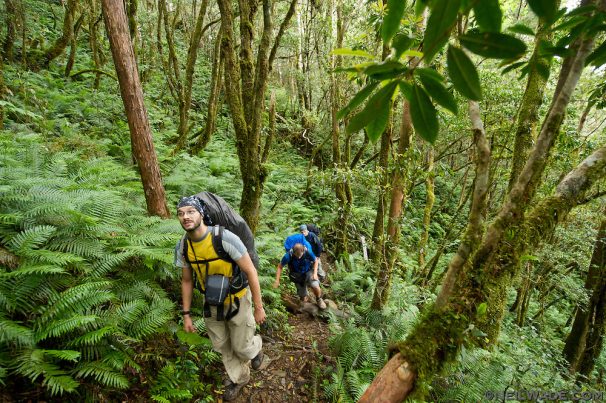What should your gear do for you in times of need?
Monday, April 18, 2016 by usafeaturesmedia
http://www.bugout.news/2016-04-18-what-should-your-gear-do-for-you-in-times-of-need.html

(Bugout.news) There is a name for someone who buys every piece of survivalist equipment that hits the market – a geardo (rhymes with weirdo). In the military, the moniker takes on a slightly different – and insulting – definition: A geardo is the guy (or, in rarer instances the girl) who deploys to Iraq or Afghanistan to be a “fobbit,” – a troop who never leaves the Forward Operating Base, or FOB – but who is regularly seen sporting an outsized collection of gear hanging from his/her body armor.
As comical as such sights are, they raise important questions that is also applicable to preppers, such as, what should our gear be able to do for us in an emergency? How much gear is too much? How much is too little? What is the right gear to carry?
These are not abstract questions, because ultimately the kind of gear you select as your primary carry – that is, the basic kit that will accompany you everywhere – has to be the right mix and fit in order to better your chances of getting through the emergency.
Probably the first thing to consider when assembling your carry gear is what your function or role or goal is to be. If you’re by yourself and you’re bugging out, then that means you’re likely to need a mix of gear that will allow you to defend yourself, feed you and establish living conditions. Firearms and ammunition, combined with shelter, first aid equipment, food and hunting devices will all be important.
Now, this basic kit will vary somewhat if you are bugging out from Point A to Point B (or C or D). For example, you may have already put your hunting gear at your bugout location; you won’t need to carry as much food because you’ve got food stocked where you’re going; and so on. But if an emergency cropped up before you had a chance to find and stock a bugout location, you may literally be forced to carry all that you own, just to sustain yourself. This latter scenario is, of course, not ideal.
What if you’re part of a group? Then your basic carry kit may also differ. For example, if you’re the group medical provider, maybe most of what you’re carrying consists of medical supplies, along with a sidearm, a few magazines, a day’s worth of rations and so forth.
If you’re the group leader, though, you may have to carry – along with a weapon and ammunition – maps, binoculars, a compass, and other equipment you’ll need to get your group to where you’re going.
And so on.
You should also give some consideration to the amount of physical strength you’ll need to carry your gear. Troops in the field overseas are often carrying something close to 80 pounds of body armor, weaponry and ammunition, field rations and radios, and often (as in Afghanistan) at altitudes of 7,000 – 11,000 feet above sea level. And while you’re not likely going to be traveling at such altitudes, the point is, your surroundings, your environment, should most definitely factor into what you ultimately decide to carry. Weather/time of year are also important; it’s pretty easy to experience a heat emergency in the spring and summer, for example, if you are having to carry a great deal of gear with an insufficient supply of water on hand.
Building a bug out bag and figuring out what your basic carry load will be shouldn’t start with someone else’s list. It should start by learning how to properly build a bag so it contains the essentials YOU need.
And for that, here is an excellent short video on this topic from TinHatRanch:
Bugout.news is part of the USA Features Media network. Follow us on Google+.
Tagged Under: Tags: dugout bag, Gear, prepper, survival

